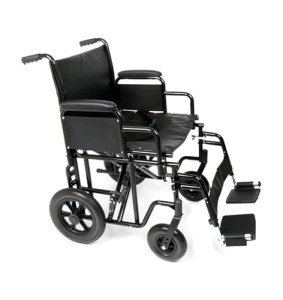5 Clarifications On Bariatric Wheelchair 24 Inch Seat
페이지 정보

본문
Seat Width
 Having the right seat width is essential to wheelchair users who invest longer periods in their chairs. Too narrow a seat will trigger pressure on the hips and thighs which could result in sores or pressure points. Having too wide a seat can likewise make it tough for the user to reach the hand bariatric manual wheelchair rims to move themselves or maneuver in little spaces.
Having the right seat width is essential to wheelchair users who invest longer periods in their chairs. Too narrow a seat will trigger pressure on the hips and thighs which could result in sores or pressure points. Having too wide a seat can likewise make it tough for the user to reach the hand bariatric manual wheelchair rims to move themselves or maneuver in little spaces.To determine the right seat width an individual would rest on a chair normally and have their measurement taken across their lap at the widest point which is normally their hips. A wheelchair measuring tape can be used to determine this, however a yard stick is preferred as it avoids people from wrapping the tape around their hips which would provide an inaccurate result.
The standard wheelchair seat width is 16" (narrow grownup), 18" (basic grownup), bariatric manual wheelchair and 20" (broad adult). For bariatric patients, a 24" seat is available. This durable extra large bariatric wheelchair from Medline features swing-away footrests, a carbon steel frame with rust- and chip-resistant chrome plating, and easy-to-clean vinyl upholstery. It has a weight capacity of 500 pounds.
Seat Depth
Traditionally, the seat depth of a bariatric wheelchair was added 2" to the measurement taken at the user's widest point (usually their hips). This was implied to accommodate extra layers of clothes that might be used during winter. However, this practice is ending up being less common as wheelchair users are able to spend more time indoors and are not using long coats. This makes the seat depth of a chair less important when picking a bariatric wheelchair. Nevertheless, it is still essential to select a choice that provides appropriate support for larger users.
The Medline folding extra broad bariatric manual wheelchair includes a comfortable 24" seat width and a heavy duty bariatric wheelchair-duty slide tube silver vein frame. It likewise has an adjustable axle and tool-free elevating legrests.
Seat Height
When it comes to identifying the correct wheelchair seat width you ought to constantly determine from the user's best point which is typically their hips. You will likewise require to think about whether the user is going to be using a winter season coat as this may add 2" to the width needed.
When a wheelchair remains in use it need to just be run on level surface areas with the wheel locks totally engaged. This is to prevent the chair from having the ability to move slopes that are 10 degrees or greater. It is likewise essential to keep in mind that any activity that might shift the center of gravity in the chair ought to be done with care. This includes reaching for products that require the individual to lean out of their seat or attempting to stand up from it.
Whenever you have the chair in use it is recommended that you routinely examine it for damage and oil any locations that are deemed needed. For example, the casters should be oiled by removing the caster fork and utilizing a multi-purpose grease to use to the caster stem bearings. Also, the foot plates can be adjusted by loosening up the bolt and then moving them to the preferred position. This permits the feet to sit easily on the footplate and avoids any pressure points from forming. This can be extremely unpleasant for the user and if left unattended, can lead to press sores.
Weight Capacity
lightweight bariatric transport wheelchair wheelchairs are developed to support more weight than standard wheelchairs. This makes them stronger and better geared up to handle falls. They are also normally bigger and broader, making them less maneuverable in tight areas than basic wheelchairs. They require automobiles with special ramps and lifts to fill them, as well as chauffeurs who know how to finest transport them from one location to the next.
When choosing a wheelchair, consider its weight capacity as it will be the main determining consider whether it will accommodate your guest's requirements. The weight capacity of the chair is frequently listed as a static load, suggesting that it suggests the quantity of weight the chair can comfortably hold while stalling. Nevertheless, some makers also note an active load that is based upon a drop test and can replicate the result of someone taking a seat in the chair. This may be a more reliable measurement of the weight limit, depending upon your requirements.
If you prepare to perform activities that shift your center of mass in the seat (such as reaching for things), be sure to have front casters pointed in a forward instructions and wheel locks engaged so the chair will not tip over. Also, inspect that casters are oiled regularly to prevent extreme wear and abrasions. The lubrication treatment includes removing the fork, separating the caster from the wheel, and greasing the caster stem bearings with top quality multi-purpose grease.
- 이전글5 In Order To Do In Korea 25.03.04
- 다음글Identity Theft Prevention: Philosphy Alter Required 25.03.04
댓글목록
등록된 댓글이 없습니다.


 블로그체험단 바로가기
블로그체험단 바로가기